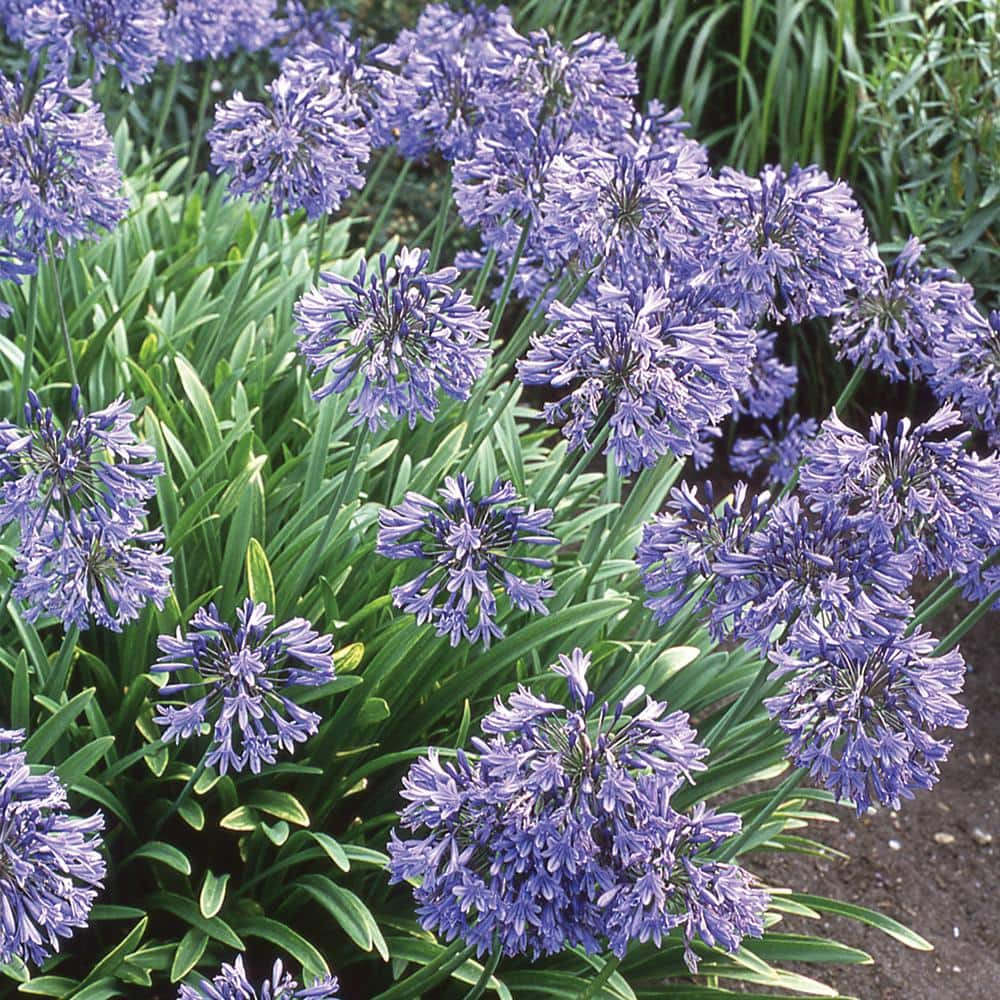Agapanthus Breeding: Tips for Expanding Your Plant Collection
Agapanthus Breeding: Tips for Expanding Your Plant Collection
Blog Article
Releasing the Secret to Successful Agapanthus Cultivation: Idea for a Flourishing Garden
In the world of horticulture, cultivating agapanthus successfully requires a tactical technique that includes various elements of plant treatment. By understanding the nuances of agapanthus cultivation, one can produce an environment where these plants flourish and flower generously.
Growing Agapanthus: Finest Practices
When planting Agapanthus, appropriate dirt preparation is crucial for making sure effective growth and development of these lovely flowers. Agapanthus, frequently referred to as Lily of the Nile or African lily, flourishes in well-draining dirt with a somewhat acidic to neutral pH level - Agapanthus. Prior to planting, it is vital to modify heavy clay soils with natural issue such as compost or peat moss to improve drainage and supply crucial nutrients for the plants
To plant Agapanthus, select a location that gets complete sunlight to partial color, as this will promote healthy development and abundant blooming. Dig an opening twice the diameter of the plant's origin ball and put the Agapanthus at the exact same deepness it was formerly expanding. Delicately backfill the hole with soil, weighing down strongly to remove any air pockets around the roots.
Water the newly grown Agapanthus extensively and remain to keep the soil uniformly wet, especially during the plant's active expanding season. Agapanthus. Applying a balanced fertilizer once a month can additionally sustain the plant's growth and flowering. By adhering to these finest methods for growing Agapanthus, you can develop a stunning display screen of these fascinating blossoms in your yard
Perfect Soil Conditions for Agapanthus
For optimum growth and blooming success of Agapanthus plants, making sure the soil problems are excellent is important. Agapanthus favors soil that is abundant in nutrients, so incorporating a well balanced fertilizer throughout the expanding period can advertise healthy growth and dynamic blossoms.

Watering and Fertilizing Tips
To guarantee healthy development and lively blooms, correct watering and fertilizing methods are crucial for successful Agapanthus growing. Agapanthus plants benefit from routine watering, particularly during the growing season.
When it comes to feeding Agapanthus, a well balanced fertilizer with equivalent components nitrogen, phosphorus, and potassium can be applied in the springtime to advertise healthy development and blooming. Slow-release fertilizers are perfect for giving nutrients slowly over an extended duration. Stay clear of over-fertilizing, as this can cause too much vegetation growth at the cost of flowers.
Additionally, integrating natural issue like compost right into the soil can enhance nutrient levels and boost soil structure, helping in the general wellness of see here now the Agapanthus plants. By following these watering and fertilizing ideas, garden enthusiasts can ensure their Agapanthus plants grow and produce stunning screens of flowers.
Pruning and Deadheading Techniques
Correct trimming and deadheading techniques play a critical role in maintaining the health and wellness and visual appeals of Agapanthus plants, matching the important methods of watering and fertilizing for effective cultivation. Pruning Agapanthus involves eliminating invested flower heads, yellowing or dead fallen leaves, and overall shaping of the plant to promote better development. Deadheading, the process of eliminating discolored blossoms, not only improves the plant's look but also encourages additional flowering.
When deadheading Agapanthus, it is recommended her response to trim off the blossom stem at the base using sharp, tidy shears. This procedure reroutes the plant's energy from seed manufacturing back right into root and foliage development, promoting a much healthier and a lot more robust plant. Routine deadheading can expand the flowering duration of Agapanthus and prevent self-seeding, which can result in congestion.
In terms of trimming, Agapanthus generally gain from a light trim after flowering to clean the plant and urge fresh growth. Cutting back the spent blossom stems and removing any type of dead or broken vegetation helps maintain the plant's vitality and overall appearance. However, it is necessary to avoid reducing right into the crown of the plant, as this can compromise its health and wellness.

Protecting Agapanthus From Vermins and Diseases
Implementing effective insect and illness management strategies is critical to protecting the health and vitality of Agapanthus plants in cultivation. One typical pest that affects Agapanthus is the Agapanthus borer, a caterpillar that passages into the plant, causing damage to the fallen leaves and blossoms.
In addition to pests, Agapanthus are prone to illness such as root rot and fungal leaf places. By remaining alert and dealing with insect and condition issues quickly, gardeners can view publisher site help their Agapanthus flourish and flourish.

Conclusion
In final thought, successful farming of agapanthus requires correct planting strategies, suitable soil problems, adequate watering and feeding, regular trimming and deadheading, and security from bugs and diseases. By complying with these methods and suggestions, gardeners can ensure a flourishing garden full of lovely agapanthus blooms. Agapanthus. Keep in mind to preserve constant care and focus to information to promote the wellness and long life of these spectacular plants
When growing Agapanthus, appropriate dirt prep work is important for making certain effective development and development of these stunning flowers.Water the recently grown Agapanthus completely and proceed to maintain the dirt equally moist, especially during the plant's energetic growing period.For ideal growth and blooming success of Agapanthus plants, ensuring the soil problems are ideal is essential. When transplanting or planting Agapanthus, make sure the soil is well-prepared to offer the required structure for the plants to develop themselves successfully. One common bug that influences Agapanthus is the Agapanthus borer, a caterpillar that passages right into the plant, triggering damage to the fallen leaves and flowers.
Report this page